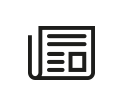Your questions on the world of standards and standardization
- What is a voluntary standard?
- What’s the point of a voluntary standard?
- How is a standard produced?
- What can be standardized?
- What’s the difference between standardization and regulation?
- Do voluntary standards encourage innovation?
- How can you prove that your product or service complies with voluntary reference standards?
- How is standardization organized in France and around the world?
- How is a voluntary standard developed?
- Which standards are mandatory?
- How do standards and patents fit together?
- Are voluntary standards free?
- French standard, NF standard, what’s the difference?
- How can you take part in standardization?
- How can voluntary standards help the French economy?
- Involvement in standardization: a waste of time or a growth booster?
- Does voluntary standardization in France have an international impact?
- What does homologation mean in the field of standards?
- What’s the difference between a norm and a standard?
- What are harmonized standards?
What is a voluntary standard?
Launched on the initiative of market players, a voluntary standard is a reference framework designed to provide guidelines, technical or qualitative prescriptions for products, services or practices serving the general interest. It is the fruit of a consensual co-production between the professionals and users involved in its development. Any organization may or may not use it and refer to it; this is why the standard is said to be voluntary.
What’s the point of a voluntary standard?
Voluntary standards are based on consensus between all stakeholders, and in this sense they bring everyone together: economic players and consumers, professionals and users, to clarify and harmonize practices and define the level of quality, safety, compatibility and least environmental impact of products, services and practices. As a result, they facilitate trade, both national and international, and contribute to better structuring the economy and simplifying everyday life for everyone.
How is a standard produced?
The standard is a collectively co-produced tool of voluntary application. It is the market players who propose its creation, develop it by consensus within a dedicated working group (standardization committees), validate it and apply it.
What can be standardized?
The size of an A4 sheet of paper, drinking water, a hard hat, the customer service of a large company or consumer reviews on the Internet… In our daily lives, just about anything can be the subject of a voluntary standard. Perfection doesn’t exist, but by optimizing the characterization, quality and performance of a product or service, a process, a measurement and testing method, an organizational system, the dissemination of a common language… we’re getting closer. Everything that is standardized is done so with a view to continuous improvement and progress for the benefit of all.
What’s the difference between standardization and regulation?
Regulation is the responsibility of the public authorities. It is the expression of a law or regulation, and its application is mandatory. Standards, on the other hand, are voluntary. Compliance is not an obligation. They reflect the company’s commitment to a recognized and approved level of quality and safety. Voluntary standards can support regulations by being cited as reference documents. Only 1% of standards are mandatory.
At European level, the New Approach, a principle laid down in May 1985, formalizes the relationship between regulation and standardization, dividing the roles of the two: the former is responsible for setting objectives to be achieved to ensure the health and safety of people or the protection of the environment (obligation of results); the latter is responsible for describing the solutions that will enable these objectives to be achieved (recommendation of means). Further information : The new approach – France Normalisation
Do voluntary standards encourage innovation?
Like patents, voluntary standards are one form of knowledge codification. Upstream, they provide reference methods and results, laying solid foundations and saving time in the innovation process. Downstream, they facilitate the dissemination of avant-garde ideas and cutting-edge techniques.
In other words, by providing the rules of the game for the market, they create the right conditions for sharing and developing new products and services. In this way, they act as innovation gas pedals, helping to bring innovations to market in all sectors of the economy.
What’s more, taking part in voluntary standardization enables us to keep abreast of and anticipate developments in a given sector or subject, and to add value to our ideas.
How can you prove that your product or service complies with voluntary reference standards?
Compliance with voluntary standards may be declared by the supplier under its sole responsibility. It commits to the quality of its production, services and organization. The supplier or customer may also request that this conformity be attested by a competent third-party body (laboratory, inspection body, certification body, etc.). The latter is responsible for checking that the product, service or system in question meets the standard’s requirements.
How is standardization organized in France and around the world?
The French standardization system relies on a network of voluntary players from all business sectors, who are involved in standardization committees. Their role is to contribute their expertise and knowledge of each subject in order to develop or revise standards in a relevant way, and to ensure the soundness and proper construction of the standard. Standardization committees are run by sector-specific standards bodies or by AFNOR, which also ensures overall coordination.
Internationally, AFNOR defends French interests as a member of the European (CEN and CENELEC) and international (ISO and IEC) standards associations. Its influence is both technical and strategic, and essential for French companies as 90% of the standards applied in France are of international origin.
How is a voluntary standard developed?
Any economic player can propose a draft standard, which is another aspect of its voluntary nature. This proposal is then submitted to a standards committee, either existing or to be created, bringing together all parties interested in the subject. Depending on requirements, the project is handled at national, European or global level.
Once the project has been finalized and approved by the commission, it enters the validation phase. This is the public consultation (open to all) known as the Public Enquiry. The text of the standard is then enriched by the committee using the comments received, before becoming definitive and being submitted to the standards institute for validation: this is the approval process.
The whole process takes between one and three years. Voluntary standards are then revised periodically (at least every five years).
Which standards are mandatory?
Standards are designed to meet the needs of the market, and are in principle voluntary. However, a number of them can contribute to the application of technical regulations and even become mandatory. This is the case for 1% of standards, or 514 texts by the end of 2022. In this case, the administration refers to it in three ways:
- in a regulatory text, published in the Journal Officiel, as the sole means of meeting the requirements of the text ;
- by means of a regulatory text conferring a presumption of compliance with all or part of a standard. In this case, there are other ways of meeting regulatory requirements, which the company may or may not choose to use;
- through technical regulations that refer to standards in an indicative manner.
How do standards and patents fit together?
A standard is the fruit of an open process aimed at the general interest, orchestrated by a duly authorized body (in France, AFNOR or a delegated standardization office), on behalf of a group of stakeholders, whereas a patent is the fruit of a closed process aimed at intellectual property, initiated by an individual, an institute or a company on an individual basis with the aim of protecting its own interests.
Nevertheless, standards and patents share a common objective: to promote the development and dissemination of innovation. Standards are designed to open up markets, to increase consumer safety and the interoperability of products and services; patents are designed to protect competitive advantages, conferring a de facto monopoly on the holder.
Between the two lies the standard, the result of technical specifications defined by a pioneering or market-dominant manufacturer, a trade association or a consortium of manufacturers.
The question of whether voluntary standards should be paid for also stems from the frequent confusion with regulatory standards: the latter are presumed to be free of charge, as they are financed by public funds, i.e. contributions from all. Voluntary standardization has the advantage of placing the cost of voluntary standards exclusively on those who have expressed the need for them.
France is not the only country to sell voluntary standards; all the countries involved in developing these standards, such as AFNOR in France, also sell them.
Are voluntary standards free?
Voluntary standards are paying documents, protected by copyright. These are value-added documents, drawn up by an impartial body with the participation of all stakeholders, according to a recognized and controlled iterative process, then updated as required. For a company, buying into a voluntary standard is always worthwhile.
Indeed, if a company declares that a price of 80 euros, for example, is too high to acquire a voluntary standard, it must know that it would cost much more to undertake a direct consultation of interested parties on the basis of its technical specifications, create a consensus and keep the document up to date.
However, as stipulated in the decree of June 16, 2009, amended by decree no. 2021-1473 of November 10, 2021 (Art.17), mandatory standards can be consulted free of charge on our website and that of Légifrance. Standards are made mandatory by decision of the Minister for Industry and the minister(s) concerned.
Despite this specific status, the financing of the work from which they are derived is identical to any other voluntary standard.
The question of whether voluntary standards should be paid for also stems from the frequent confusion with regulatory standards: the latter are presumed to be free of charge, as they are financed by public funds, i.e. contributions from all. Voluntary standardization has the advantage of placing the cost of voluntary standards exclusively on those who have expressed the need for them.
France is not the only country to sell voluntary standards; all the countries involved in developing these standards, such as AFNOR in France, also sell them.
French standard, NF standard, Quesaco
Voluntary standards are 90% European or international in origin. They are identified by their prefix: ISO for standards drawn up under the aegis of the International Organization for Standardization (where AFNOR represents France), EN for those of the European Committee for Standardization (CEN).
Following the Russian dolls principle, an international standard can be adopted in Europe and, in turn, in a national collection. Its name is then enriched with the corresponding prefixes, in ascending order of geographical scope: NF ISO, NF EN ISO.
When a standard bears only the prefix NF, this means that it is applicable and applied only in France, and that it is sold in the AFNOR collection. However, it could one day take on other prefixes, if AFNOR takes the subject to the international level to make the text a reference beyond national borders, in the interests of the markets. This is the case for many voluntary standards, such as those for electronic cigarettes.
How can you take part in standardization?
Anyone can participate in the development of a standard. Simply apply to AFNOR Normalisation or the sectoral standardization office where one exists. If you’re already thinking about your product or service, you can join the existing committee and contribute to the work in progress. If your field is new, AFNOR Normalisation will bring together all interested stakeholders to validate that there is sufficient interest expressed and to create a new commission accordingly.
Commission activities are managed in the form of projects requiring technical input from participants and their financial contribution to cover the costs of organization and logistics. An economic player who joins a standardization committee is directly involved in producing the standards that will drive the market in the future.
How can voluntary standards help the economy?
Voluntary standards help to “pull up” the French economy. They serve as reference tools for clarifying and harmonizing practices, and defining a level of quality, safety, compatibility and least environmental impact for products, services and practices. In this sense, they help lay the foundations for tomorrow’s economy and society.
A BIPE study for AFNOR shows that voluntary standards account for 15 billion euros in French production. Carried out in 2016, this study was duplicated in 2017 and 2019 in the mechanical engineering and electrical engineering sectors, with the same positive conclusions. They also encourage the adoption and dissemination of approved and recognized best practices, enabling the various economic players to evolve in a context of serenity and performance. What’s more, they provide a common language, facilitating both national and international exchanges.
Last but not least, voluntary standards offer a unique and indispensable means of encouraging progress and innovation, and promoting France’s position on the international stage.
Involvement in standardization: a waste of time or a growth booster?
A 2016 study by BIPE for AFNOR shows that, for a company, participating in standardization and using standards brings tangible, visible benefits on the income statement. If we cross-reference the attendance rate of standards committees with economic data, we can see that companies involved in standards production have a sales growth rate 20% higher than the average observed in their sector.
Similarly, the proportion of their business generated by exports is higher: the export rate for these companies is three points higher than the average rate for their sector. In other words, the standard is a passport to better sales outside our borders.
Does voluntary standardization in France have an international impact?
Voluntary standardization in France has positive repercussions internationally. Whether for the development of the French economy and businesses, directly, or for the benefit of all, indirectly. This impact is due to two factors: firstly, the impact of AFNOR’s influence on international bodies (CEN, CENELEC and ISO, IEC), and secondly, the quality of the French industrial fabric.
In response to the development of trade and the internationalization of the economy, AFNOR developed one of the first standardization networks. It therefore gives France a leading role in the governance of international organizations. It is a permanent member of the boards of CEN and CENELEC (European level) as well as ISO and IEC (international level). These bodies are the main deliberative bodies for these structures. This strong presence enables AFNOR and its stakeholders to influence the standardization work and strategies of these bodies, and to effectively defend French interests.
According to the international standardization barometer, which can be downloaded here, France ranks 2nd on the European podium (CEN/CENELEC) and 3rd internationally (ISO/IEC).
Présider ou piloter un comité européen ou international, est un atout majeur pour la France. Ces responsabilités valorisent les pratiques communes validées en France, facilite les relations avec les partenaires internationaux, et permettent d’anticiper les propositions d’autres pays et de renforcer la compétitivité des entreprises sur les enjeux liés au secteur d’activité concerné.
France is also blessed with a high-performance industrial fabric. This asset enables AFNOR to promote the positions of France’s economic players, making them a benchmark for the development of a given sector at international level. France is even more committed in areas where it has a major responsibility. This is particularly true of the management and services, transport and logistics, and water and energy sectors.
What does homologation mean in standards?
In the field of voluntary standards, homologation designates a form of officialization of a standard, opening up a period during which economic players can claim to apply it. In practice, a country’s standards institute validates and gives definitive status to each standard by granting it approval. At AFNOR, for example, each new standard added to the collection is approved by the Director General, with a precise date, and described as such on the header. When a new standard replaces another, the approval ratifies the deletion of the previous version.
What’s the difference between a norm and a standard?
Norme and standard are two terms that are often confused, probably because they translate into the same word: ” standard “. In reality, they cover different notions. A voluntary standard is a frame of reference drawn up by economic players in a specific sector, providing guidelines, technical or qualitative prescriptions for products, services or practices serving the general interest. All stakeholders are represented. For its part, a standard refers to recommendations or specifications proposed by a restricted group of players, with a private and closed dimension, obviating the notion of general interest. There are many examples in the field of IT equipment. A standard can become a norm when it is open to the greatest number of people.
What are harmonised standards?
Voluntary standards are said to be harmonized when they have been drawn up at the request of the European Commission, to apply a regulation (European directive or regulation). They derive from the new European Union legislative framework of 2008, which uses standards to harmonize technical rules for the free movement of products within the European single market, modernizing the New Approach principle established in 1985. When cited in the Official Journal of the European Union, harmonized standards give rise to a presumption of conformity: compliance with these standards is proof of compliance with European legislation.
As such, access to these standards is facilitated. In France, AFNOR has extended this measure to the NF versions of the standards concerned(click here for the list), and offers a text decoding and explanation service called “Harmonized Standards”.
It all starts with a request for standardization, which is submitted to the European standards organizations (CEN, CENELEC and ETSI). If they accept it, they develop and approve the European standard, with the obligation for each national member (AFNOR in France) to adopt it identically, with the status of a national standard. This principle of systematic adoption by all national members applies to all European standards, whether harmonized or not. This operation is governed by European regulation no. 1025/2012 of October 25, 2012, and highlighted by the European standardization strategy published in February 2022.






